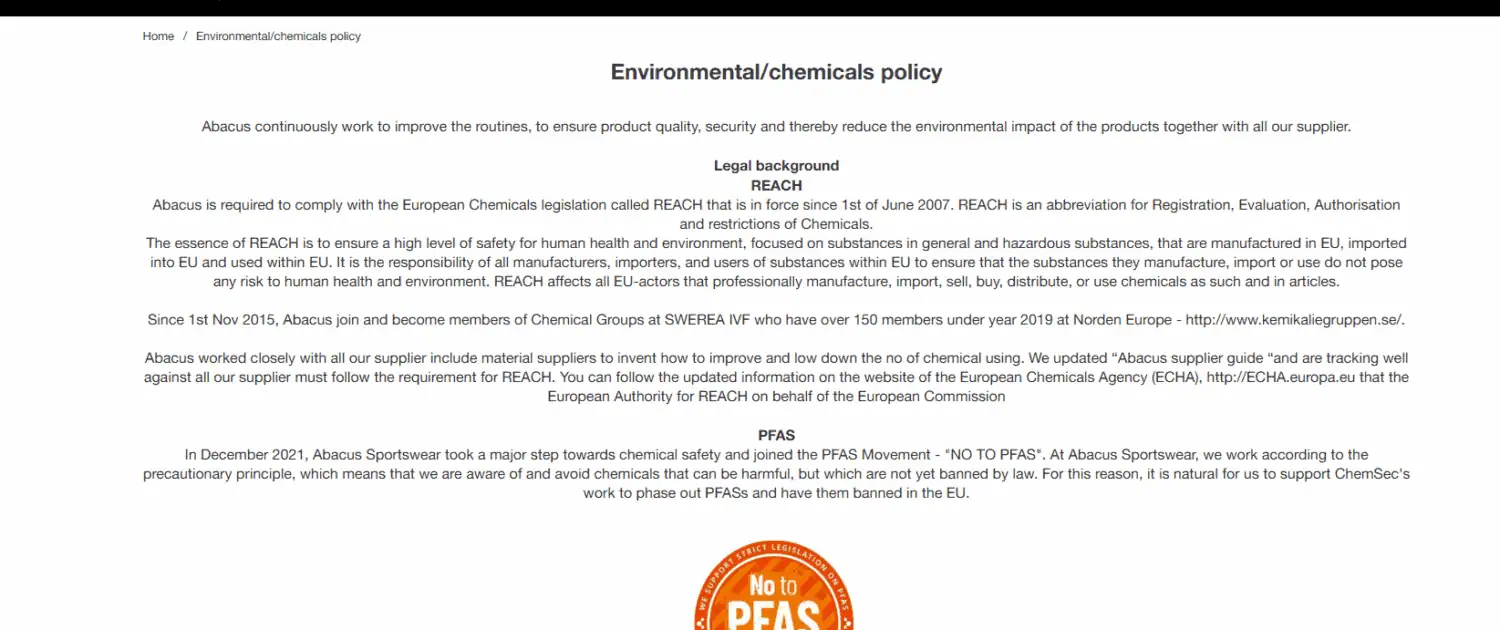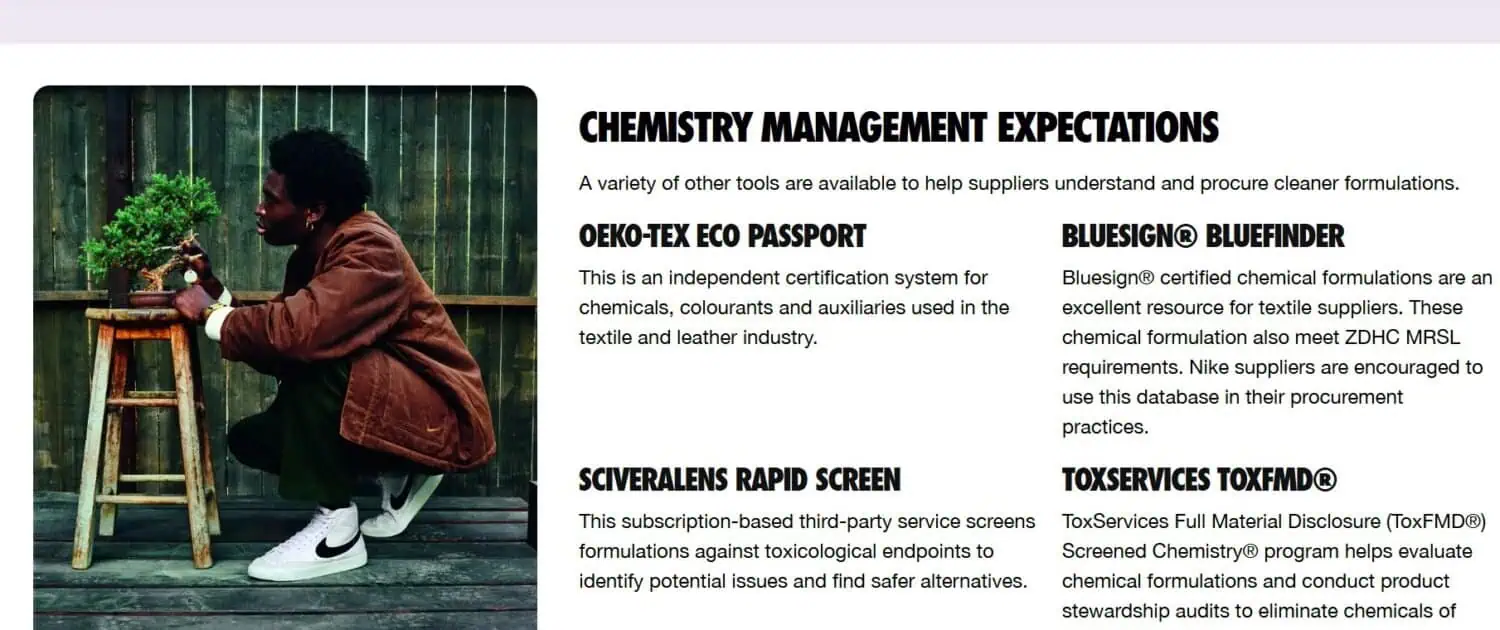PFAS were long regarded as all-rounders: whether frying pans, dental floss or rainwear – the chemicals were used to make products grease-, water- or dirt-repellent. However, PFAS, the abbreviation for polyfluorinated alkyl substances, have since fallen into disrepute due to the enormous health risks for consumers, which is why the EU has been discussing a complete ban since 2023 and some countries and states, such as France, have already implemented it.
Functional clothing as a use case
In the past, athletes came into contact with PFAS, especially in functional clothing. Gore-tex used the chemicals in the same way as almost all other membrane manufacturers. Polyfluorinated and perfluorinated chemicals are mainly found in waterproof membranes or in zippers, for example. In general, there are already some companies in the outdoor sector that do not use PFAS at all. VAUDE, for example, is one of them, but Patagonia and Houdini are also not launching any new products with PFAS on the market.
We wanted to know: What is the situation in golf, where waterproof and water-repellent products play a major role? The positive news first: some well-known brands are communicating very clearly that they are phasing out the use of PFAS. This includes the industry giant Nike, which has stated in its regulations on the use of chemicals that it has been phasing them out since 2024. Swedish manufacturer Abacus has also been phasing out PFAS since 2021. “At Abacus, we work according to the precautionary principle, which means that we are aware of the harmfulness of chemicals and avoid them,” explains Design Manager Chis Mattson. Galvin Greenalso completely avoidsthe use of PFAS, whether in the materials themselves or in their coating. “We started moving away from PFAS-based treatments a few seasons ago and in Autumn/Winter 2024 we launched our first full collection of waterproof garments, windproof garments and thermal mid-layers made with PFC-free (PFAS-free) water repellent finishes such as Teflon EcoElite™ and Bionic-Finish® Eco,” concludes Mikhel Ruia, Managing Director of Glenmuir & Sunderland of Scotland.
Despite the changeover, Sunderland of Scotland, for example, is sticking to its product promise of waterproofness: “We are proud that our current sustainable finishes offer long-lasting water repellency without compromising breathability, comfort or weather protection – and as always are backed by our lifetime waterproof guarantee,” is Ruia’s satisfied conclusion after the move away from PFAS materials for the company, just like everyone else, faced with numerous extensive product tests.
Subscribe to our newsletter!
News & trends around the topic of sustainability in golf
Little transparency in retail
If we look at all other brands, the analysis becomes much more difficult for the consumer, as the “No to PFAS” is no longer explicitly included in the product information or communication on the subject is almost completely omitted from the websites. Even the major online portals rarely include this information in the product description, making it almost impossible for golfers to differentiate.
Then there are the confusing terms: For some products, such as Kjus or Titleist, the manufacturer’s label uses the statement “PFC-free DWR”, which stands for the use of no or very few fluorinated chemicals. However, it cannot be ruled out that some parts, such as the zippers, still contain PFAS components.
When using rain materials, the older they are, the more likely they are to contain PFAS, because the debate about chemicals has only really led to new product developments in recent years. If you choose from the latest collections, you have a much higher chance of buying equipment that already uses PFAS alternatives. In general, the EU discussion about planning a PFAS ban alone has led manufacturers to start phasing out harmful chemicals.
Rainwear without PFAS
Abacus: Abacus joined the “No to PFAS” movement in 2021 and converted its product lines. The fabrics themselves were already PFAS-free before, but their treatment to produce the waterproofing was not. This is now also the case. Rainwear from Abacus is therefore PFAS-free. The Organotex product is also sold in order to improve the durability of the products for the customer.
Chervò: All products of the Italan brand are PFAS-free. For improved consumer transparency the website will be updated shortly.
Sunderland of Scotland: All rainwear and all products with waterproof functions in the fall/winter collection are PFAS-free.
Nike: Nike has already replaced PFAS according to the current Nike Chemistry Playbook & RSL and does not offer rainwear containing PFAS.
Galvin Green: The current rain collections are explicitly labeled PFAS-free. There is a detailed explanation on the website. Transparent and conclusive.
Unclear PFAS communication
Chervò: The Italian manufacturer does not make a clear “PFAS-free statement”. It uses Aqua-Block technology, which is CFC-free, but this does not mean PFAS-free or PFC-free, but rather a phase-out of the use of ozone-damaging CFCs. The same applies to Aqua-Drop, which is also used. Chervò did not respond to an inquiry about the use of PFAS.
FootJoy: Acushnet did not respond to the editor’s inquiry about the use of PFAS. On the FootJoy website there are hardly any statements about which chemical standards the company adheres to. When reviewing the products, the Hydro-Knit jacket for men is labeled as “PFC FREE DWR Finish”. There is not a single product in the women’s collection where this is mentioned.
Kjus: Kjus refers to the PFC-free DWR treatment of the material in numerous parts of the 2025 collection, for example the Men’s Pro 3L 3.0 Jacket. This does not mean that PFAS are generally not used, but that the material is treated without PFAS to achieve waterproofness.
Puma: Puma has been focusing on the elimination of hazardous chemicals since 2017. The company does not communicate an explicit exclusion of PFAS. PFC-free products can be assumed, as Puma works with the AFIRM initiative to reduce hazardous chemicals.
What does PFAS stand for?
PFAS is the abbreviation for “per- and polyfluorinated alkyl substances”. This refers to a group of chemical compounds consisting of carbon and fluorine atoms. They were developed in the 1960s. They are water, grease and dirt repellent and have been used in many products for decades: in pans and rainwear, but also in ski wax and cosmetics, to name just a few examples.
Are PFAS already banned?
No. The European Chemicals Agency ECHA has submitted a proposal for a general restriction in 2023 that would affect a large number of chemicals. A decision on this proposal is expected by the end of 2026. In addition, the EU is planning to limit the use of PFAS in consumer goods, including textiles, more strictly. However, there are also exceptions. In France, PFAS will generally be banned in textiles from January 2026. In Denmark, the import and sale of textiles containing PFAS to private individuals will be banned from July 2026.
Do PFAS degrade?
PFAS do not occur in nature. They do not degrade quickly through water, light or bacteria.
Which textile labels exclude the use of PFAS?
OEKO-TEX Standard 100 is a seal that requires the absence of PFAS.
Since January 1, 2025, BLUESIGN Appoved and BLUESIGN Product also require that the products must be manufactured without the use of PFAS.
What is the difference between PFC-free DWR (Durable Water Repellent) and PFAS-free?
PFC-free only refers to one area (the water-repellent surface treatment), while “PFAS-free” refers to the entire chemical supply chain and all components.
What you should look out for:
The following designations or descriptions of the product are positive: PFAS-free, PFC-free, C0-DWR, non-fluorinated DWR. Care labels are also explicitly attached to some products, for example PFS-Free Water Repellent.









